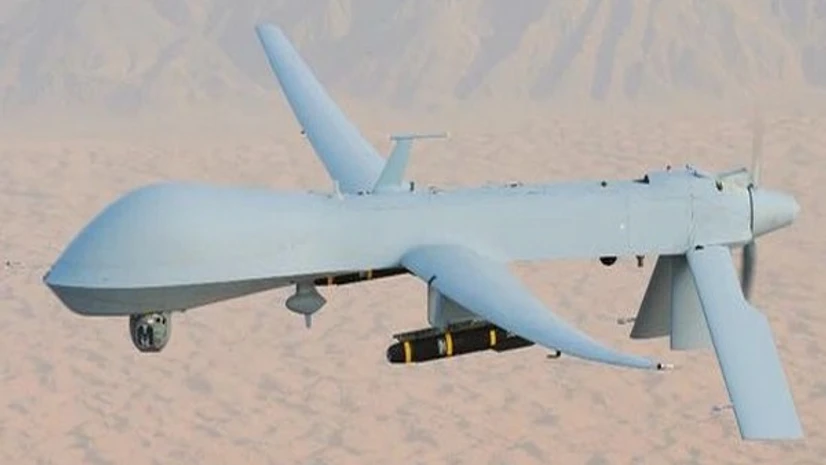Last week, India's Defence Acquisition Council (DAC) approved the purchase of US-Made Predator drones, arguably the best in the world. The deal will cost India around $3.5 billion for 31 high-altitude, long-endurance Predator-B drones. India already operates two Sea Guardian drones, an unarmed version of the deadly Predator series.
What are Predator Drones?
Developed by a San Diego-based defence contractor, General Atomics, Predators drones are considered the best in the business. Primarily developed to conduct surveillance-related operations, one of these drones famously identified Osama bin Laden in Afghanistan in 2000.
Thereafter, armed versions of the Predator drones were developed that came with lethal Hellfire missiles. With continuous revisions and updates, today's predators have become far more superior compared to their earlier versions.
These drones can operate at heights up to 50,000 feet for over 27 hours with a payload capacity of 1,746 kg. India is interested in the MQ-9B SkyGuardian and MQ-9B SeaGuardian variants of these drones, which are designed to operate via satellite and have endurance of more than 30-40 hours, a report in The Times of India said. These drones can fly in all weather conditions with payloads of more than 2000kg.
Also Read
Predator drones operational history: A brief
Since it started serving with the American armed forces in 1995, Predator drones have seen extensive usage in the conflict zone. The Predator was first deployed over Bosnia in the summer of 1995 and General Atomics was awarded the first contract of series production in August 1997.
Later, it was deployed in Afghanistan, Iraq, Yemen, Libya, Somalia, and Syria to support operational requirements. With extensive and proven experience in war-torn zones, Predator drones have made a reputation for themselves. Predators' superiority in unmanned warfare is unmatched so far.
Other drones in the world
While American Predator drones are the gold standard when it comes to the best drone technology, other countries are also making strides in developing their own unmanned aerial vehicles (UAV).
Israel's Elbit Hermes 450: It is an assault UAV equipped with two Hellfire missiles. With an endurance of over 20 hours, it can be used for reconnaissance, surveillance, and communications relay. These drones are also operated by the US.
Turkey's Bayraktar drones: Turkey has made significant advances in drone making. Its Bayraktar drones have shot to fame after its operational prowess came to light as Ukraine used them to zero in on Russia's land-based targets which were turned to fumes seconds later after they were locked.
The Bayraktar can carry laser-guided and has a compact body that can be carried on a truck. Importantly, they only cost a fraction of American Predator drones. The drone is sold to 13 countries and is said to have the ability to change the course of wars.
These very drones were used to decide the fate of the Azerbaijan-Armeia war when the two countries fought in 2020 over Nagorno-Karabakh.
Where does India stand in the drone race?
While India recognises the quintessential role drones can play in modern warfare, its own development of the same is abysmal. However, with a renewed push towards the drone industry, startups in the country are focused on developing and identifying new applications and use cases for drones, a KPMG report said.
Centre is taking a keen interest in improving indigenous know-how of drone technology and its liberal policies and other initiatives like drone shakti are supporting the market's growth, the report added. Drone Shakti is a production-linked incentive scheme designed to bolster domestic drone development.
DRDO Rustom
The DRDO Rustom is a medium-altitude long-endurance unmanned air vehicle (UAV) being developed by the Defence Research and Development Organisation. It has been derived from National Aerospace Laboratory (NAL's) LCRA (Light Canard Research Aircraft developed by the team that worked under the late Prof Rustom Damania in the 1980s.
The Rustom will have three variants namely, Rustom-1, a tactical UAV with an endurance of 12 hours.
The second is Rustom-H, a larger UAV with a flight endurance of more than 24 hours which will also have a higher range and service ceiling. Service ceiling refers to the maximum height an aerial vehicle can achieve.
The third, Rustom-2 (TAPAS-BH-201) will be a UAV based on Rustom-H. It is being developed on the lines of General Atomics MQ-1 Predator. Its first flight took place in November 2016.

)
